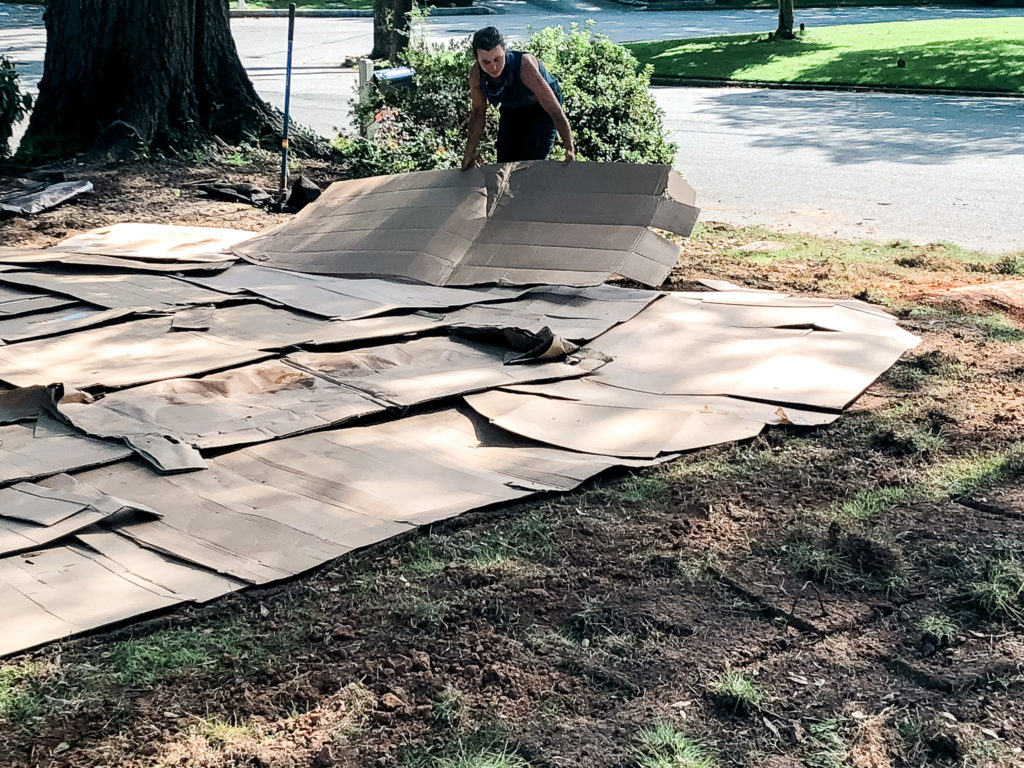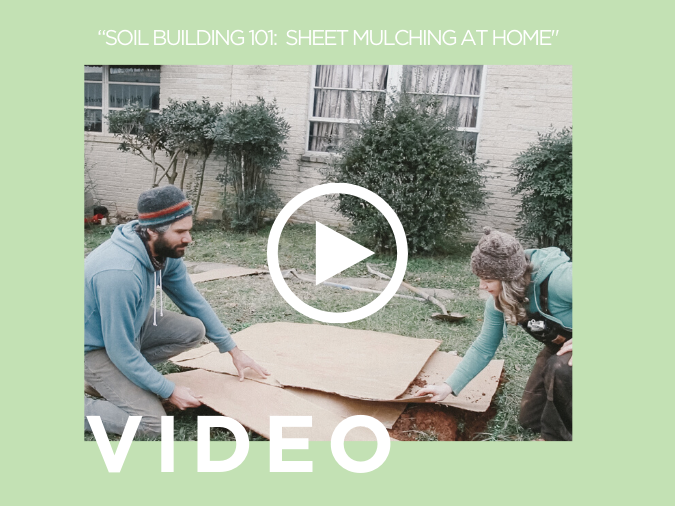Soil profiles change depending on your climate. However, there is a vital exchange between plants and fungi, bacteria, and other organisms in any soil type. Building soil through the addition of organic matter has numerous impacts on your garden and beyond. It is said that pre-colonization, the eastern US had upward of 14 FEET of topsoil. It is estimated that it can take between 500 and 1000 years to build 1” of topsoil in natural processes. BUT we have the tools to accelerate soil generation through our landscape management and permaculture practices.

One free and easy technique to accelerate soil building in your yard or permaculture garden is to utilize extra cardboard beneath compost and/or mulch to suppress weeds. The cardboard will encourage the green layer beneath to decompose, adding to the organic matter in your soil. This method is known as “sheet mulching” and it’s a staple in permaculture techniques.
What is Sheet Mulching?
Sheet mulching, also known as lasagna gardening or no-dig gardening, is a method that involves layering organic materials directly onto the soil surface. The layers decompose over time, enriching the soil and creating a nutrient-rich environment for plants. This technique mimics natural processes, fostering a more sustainable and harmonious garden ecosystem. While it’s an effortless technique, we’ve picked up a few pro-tips to make it extra easy!
Here’s a quick how-to video:
Benefits of Sheet Mulching:
- Weed Suppression: By creating a barrier against weeds, sheet mulching significantly reduces the need for herbicides or extensive manual weeding. This not only saves time and effort but also promotes a healthier garden ecosystem.
- Water Conservation: The mulch layer acts as a natural water retention system, minimizing evaporation and maintaining soil moisture. This is especially crucial in arid regions, contributing to water conservation and drought resistance.
- Soil Enrichment: Sheet mulching enhances soil fertility by promoting the decomposition of organic matter. The resulting humus improves soil structure, drainage, and nutrient availability for plants.
- Erosion Prevention: The protective layer of mulch helps prevent soil erosion caused by wind and water runoff. This is particularly important on slopes or in areas with heavy rainfall.
- Biodiversity Promotion: By fostering a healthy soil ecosystem, sheet mulching encourages the proliferation of beneficial microorganisms, insects, and earthworms. This biodiversity contributes to a more resilient and sustainable garden.
Soil is one of the most important aspects of a healthy garden, and there are several easy and inexpensive methods you can use to build soil fertility. If you are interested in learning all about soil building and other tried-and-true techniques for making your eco-paradise, find out more in the Regenerative Backyard Blueprint, an online permaculture course.
